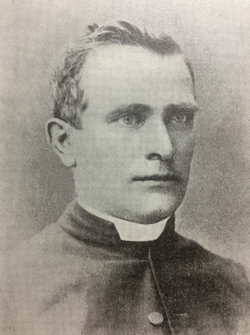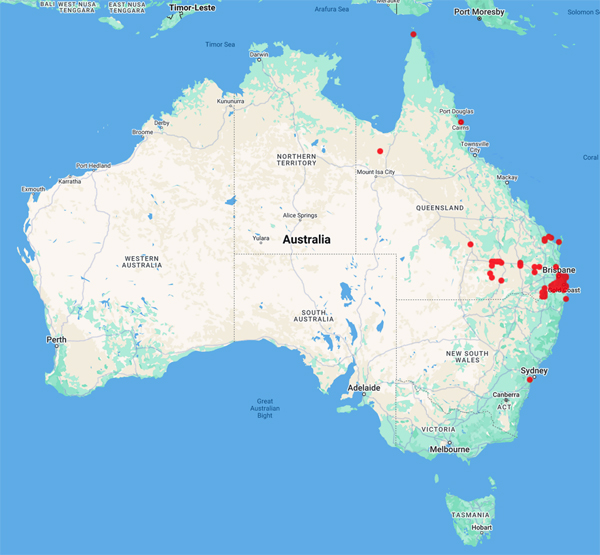
Council of Heads of Australasian Herbaria
Australian National Herbarium
Biographical Notes
 |
Council of Heads of Australasian Herbaria |
 Schortechini,
Benedetto (1845 - 1886)
Schortechini,
Benedetto (1845 - 1886) Born in Cupramontana, in the Papal States in 1845. He died in Calcutta, India, 4 November 1886.
He was one of the group of Italian priests brought out for the new Diocese of Brisbane by Bishop James Quinn after the close of the Vatican Council and probably arrived in Queensland in 1871. He worked at Stanhope and Roma for short periods and was stationed in Gympie from 1873 to 1875. In 1875 he was appointed Pastor of the Logan Parish, where he was to remain for the next nine years until he left Australia at the start of 1884.
Along with his pastoral duties Fr. Scortechini combined an ardent interest in the study of Botany. He collaborated with the colonial Botanist, F.M. Bailey, and collected specimens from the different areas in which he worked, especially in the Logan District. Today 89 of these specimens are listed among the collection of the Queensland Herbarium, a section of the Department of Primary Industries at Meier Road, Indooroopilly, Brisbane. His specimens are also held at the Royal Gardens at Kew, in London. He published much of his research in the scientific journals of the day and was awarded membership of the Linnaean Society of New South Wales and later of the same Society in London. He was a foundation member of the Royal Society of Queensland.
His scientific interests gave him a natural affinity with the contemporary
priest-scientist Rev. Julian
Tenison-Woods. It was at his suggestion that Schortechini was invited
by the government of Straits Settlements (Malaysia) to record the plant life
in the country. This he did partly in company with Tenison-Woods throughout
1884, 1885 and 1886. He intended to travel to London via India, to publish
the results of his botanical studies. However, in Calcutta, he contracted
a mysterious illness, probably malaria or some form of jungle fever from Malaysia,
and he died suddenly on November 4, 1886.
Source: pers. com. Brett Horton, Assistant Principal,
Marymount Primary School, - church records from All Saints, Tallebudgera,
Qld.
Portrait Photo: van Steenis (ed) 'Flora Malesiana - Cyclopaedia of Collectors', Djakarta, (1950) p.480
Data from 811 Australian specimens
